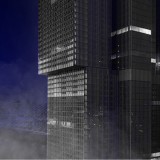Hybrid buildings consist a potential in architecture in the 21st century that arises many issues. The further examination of those, is the focus of this research project. In particular, having as a starting point "This is Hybrid", a catalogue of modern hybrid buildings, it became crucial to redefine the term. The nature of hybrid buildings responds to a wide range of mixed used buildings in the urban grid, which deny any kind of categorization. The constitution of a methodology is consider to be a solid attempt, of specifying the principles and elements, which characterize the birth of hybrid structures. From their introduction as a response to the metropolitan pressures of the American city, today they seem to be reestablished in the American grid, while been spread in European cities as well. The juxtaposition of programs that convey a certain lifestyle, can be utilized to stimulate and reinvent the urban environment. The focus on the modern city, was necessary because the hybrid building cannot exist apart from it. The relationship between them, offers an opportunity to examine the hybrid nature from disparate theoretical views. The exploration of multiple ways to express hybrids, has arose the argument of creating a kind of typological frame to approach the buildings in question. Type in architecture is a controversial subject, which is being analyzed briefly, to make apparent the way of establishing a possible new building type. Having instituted the criteria that redefine the hybrid nature, it was crucial to reintroduce the buildings presented in "This is Hybrid" , and demonstrate the type through a model case study (De Rotterdam). This process however, confronts the ability to accommodate incompatible activities, as a necessary hybrid quality. Is it possible that buildings without programmatic disparity can validate the current typology? Is this Hybrid?
